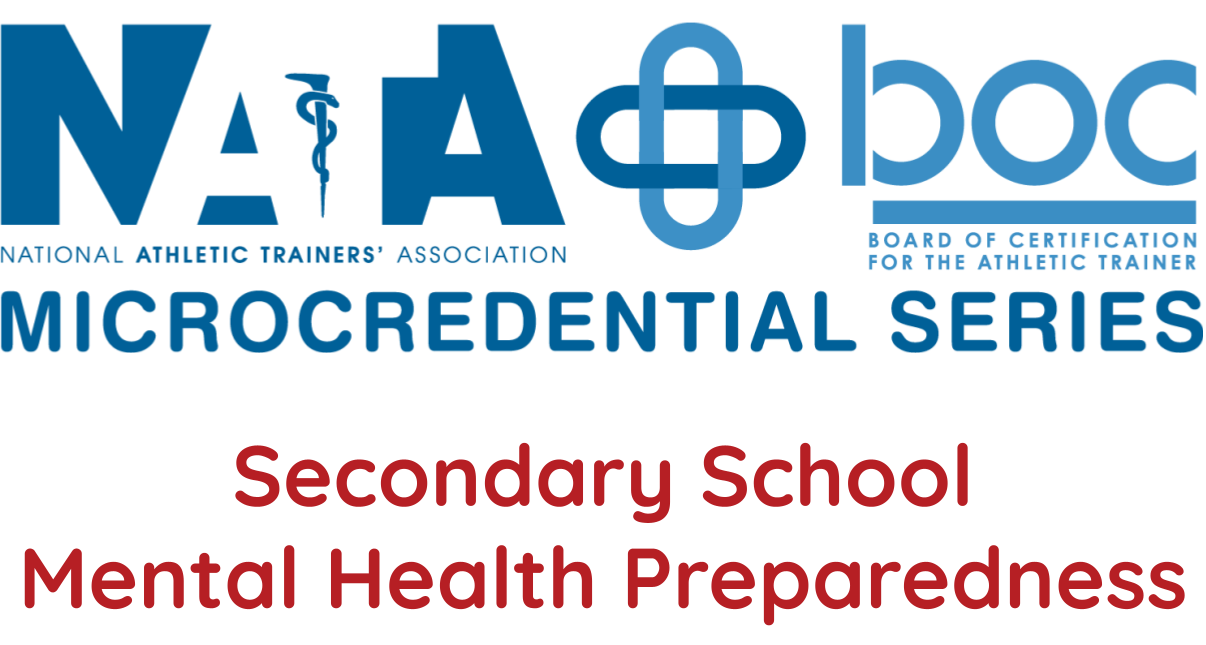
NATA Position Statement - Reducing Intentional Head-First Contact Behavior in American Football Players
-
Register
- Non-member - $25
- Member - $15
- Student - $15
- Staff - Free!
- Certified Student - $15
- Retired - $15
Abstract:
The behavior of using the head as the point-of-contact in American football is persistent, well documented and a direct cause of catastrophic head and cervical spine injury, and may be associated with long term neurocognitive pathologies. While educational initiatives and rules changes have shown promise in deterring head-first contact behavior, clinical best-practices rooted in high-level evidence for preventing or changing the behavior are lacking. This NATA Position Statement provides evidence-based recommendations for reducing the prevalence of head-first contact behavior in American football with the aim of reducing the risk of head and neck injury.
Learning Objectives:
- Attendees will be able to characterize the prevalence of head-first contact behavior in American football.
- Attendees will be able to summarize evidence based recommendations for reducing the prevalence of head-first contact in American football, with the aim of reducing the risk of head and neck injury.
- Attendees will be able to develop strategies that can be employed for fostering a community-based approach for reduction of head-first contact behaviors.
Level:
Advanced
Domain(s):
Domain 1: Risk Reduction Wellness and Health Literacy
CEUs:
1.0 Category A
Keywords: concussion, head injury, head-first contact, neck injury, prevention, cervical spine, reducing risk, spine injury, tackling
Course Expiration:
This premium course offering must be completed within 12 months from the purchase date.

Created in collaboration with the NATA Foundation Educational Resources Committee.
A portion of the proceeds from this course is donated to the NATA Research & Education Foundation.
Erik Swartz, PhD, ATC, FNATA
Dr. Swartz’s research for over 20 years has focused on the prevention and acute care of head and neck injuries in football. He has received grants from The GOG Foundation, NATA Foundation, NOCSAE, NFL Charities and was a winner of the NineSigma Head HealthChallenge. He has over 30 publications in journals such as The American Journal of Emergency Medicine, New England Journal of Medicine, Spine, and The American Journal of Sports Medicine. He served on the NFL Head Neck and Spine Committee’s Subcommittee on Safety Equipment and Rules and as writing chair of two NATA Position Statements on the prevention and acute management of head and spine injuries in athletes. He has served on the Editorial Boards of the Journal of Athletic Training and the Athletic Training and Sports Health Care Journal. In 2011 he was honored with a Fellows designation in the National Athletic Trainers’ Association and in 2015 received the Most Distinguished Athletic Trainer Award, also from the NATA. He received his PhD in Applied Biomechanics at the University of Toledo.

